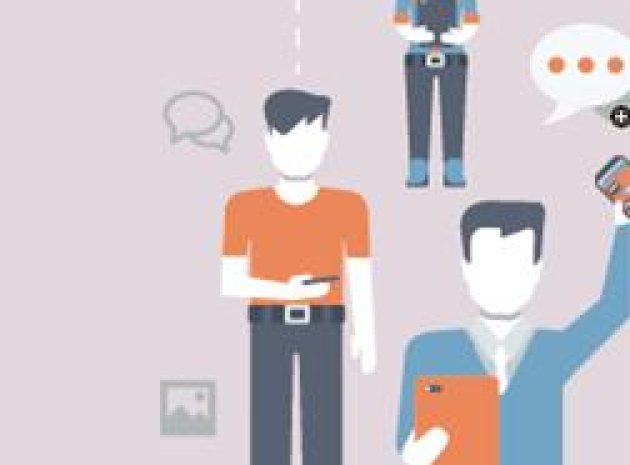At Digital Awareness UK, we speak to thousands of young people every month about how to be safe and responsible online and time and time again we battle with the same dichotomy – should we celebrate their tech savviness or should we stifle it?
The obvious choice of course is to celebrate it, which is the very foundation our e-safety organisation is built on. We believe that the only way to truly educate students in the e-safety space, or any other, is through empowerment. However, with issues like cyberbullying, sexting and security violations at an unprecedented level in schools across the UK, we must also accept that whilst empowerment is key, we have great responsibility to ensure our students are skilled up when it comes to responsible use.
Double dealing
Young people today never fail to surprise and amaze us when it comes to how savvy they are online. They can show us how to override the school’s security filters, how to hack into their friend’s social media profiles, they can even demonstrate how they’ve managed to use their parent’s credit cards to make in-app purchases without them ever finding out.
This is a generation of people who are used to helping their parents and even teachers overcome any technical issues they may face – whether that’s showing them how to upload a video to YouTube or how to get presentations to work in the classroom.
Unfortunately for us, this often means that even if you’re just a couple of years older than them, they see you as a digital dinosaur, and no one wants that title! We talk to young people day in, day out about how they’re using technology and we’re always on the back foot, so how can we expect your average teacher to know the ins and outs of what Snapchat is and what the associated dangers are when using it? The ever-evolving digital landscape doesn’t wait for anyone to catch up.
But as much as this generation will have learnt how to enter a false date of birth to have an Instagram account illegally at the age of eight, that doesn’t mean they have common sense. It doesn’t mean they have the life experience to know that when a ‘model’ wants to add them as a friend on Facebook, it’s probably too good to be true. Or that it’s unlikely that there is £10,000,000 waiting for them in Nigeria if they click on that link. Or that people are usually presenting the best possible versions of themselves on social media (a version of themselves that often doesn’t actually exist).
The only way you learn these things is through life experiences and sadly, now that young people are experimenting with social media from such a young age, we don’t always have time to share those lessons with them; sometime we haven’t learnt those lessons yet ourselves!
At Digital Awareness UK we run fun, interactive social media safety workshops with students of all ages and usually by the time we reach year four students, most of them admit to regularly using social media. One of the biggest and most concerning trends we’re seeing in schools at the moment is that student are wising up when it comes to understanding and overlooking the rules their parents set out for them. We’re seeing a huge trend in the rise of the ‘double-profile’, for example.
This essentially means that children may tell their family they’re on Facebook and share their account information so their parents can regularly check in and see what they’re up to. They are of course mindful that anything they post could be scrutinised by ‘the olds’, so they only post content they know they would be deemed ‘appropriate.’ What mum and dad aren’t aware of is the fact that their child has another profile on Facebook called Twinkle369, which is the account she actually uses to post what she really wants to share with her peers. Savvy – but worrying – move.
Real resilience
Guidelines set out from the likes of Ofsted will encourage schools to ensure that their students know how to ‘report’ issues to social networks if they’re ever victims of online abuse. Students know they’re supposed to do this, we rarely need to remind them. Sadly they also know that using the ‘report’ feature is often ineffective due to the time it takes for social networks to respond, or even the fact that particularly on gaming networks like Xbox Live or Playstation Network, and even on platforms like YouTube, people ‘report’ each other when they’ve done nothing wrong and use it as a tool to cyberbully. Again, students have wised up to it.
The irony of this all is that the issues we’re dealing with don’t start online. Behaviours like bullying, stranger danger, pressurising people into sexting, even extremism and radicalisation are developed offline. So as educators it’s imperative that instead of just focusing on what the latest social networks are or how students can block, report or ‘tell an adult they trust’ we also focus on teaching them about the impact certain behaviours can have on their health and wellbeing.
An example of this is could be seen in sex education. When we teach students about relationships, trust and not feeling pressured into doing something, we can talk about how this doesn’t just happen face-to-face, it can happen when people blackmail others to send them explicit images of themselves via social media.
The most progressive schools we work with have a holistic approach to e-safety, which doesn’t just focus on how it can be crammed into a one hour ICT lesson. Instead it looks at how it can be integrated across the curriculum – PHSE, art, drama, sociology, psychology and so on. This allows us to share relevant life experiences, which override the benefits that any unsafe, savvy social media use can offer.
6 STEPS TO GET TO GRIPS WITH ONLINE SAFETY
1. CPD: Activate regular training solutions to keep staff skilled up on social media safety
2. Education: Create a culture of responsible social media use amongst students through an innovative strategy that effectively integrates e-safety into the curriculum
3. Policy: Ensure your students and staff have clear acceptable use guidance
4. Parental engagement: Get your e-safety efforts backed up at home through parent events
5. Leadership: Ensure your SLT empowers staff to effectively advise on social media safety by investing in your e-safety vision
6. Crisis management: Get a robust escalation system and crisis plan in place
ABOUT THE AUTHOR
Emma (pictured left) and Charlotte Robertson are co-founders of Digital Awareness UK, which uses leading YouTube stars, hackers and social media specialists to inspire students to enjoy using social media safely. If you’d like to work with them to help bolster your e-safety efforts, get in touch at www.digitalawarenessuk.com or tweet @DigitalSisters









